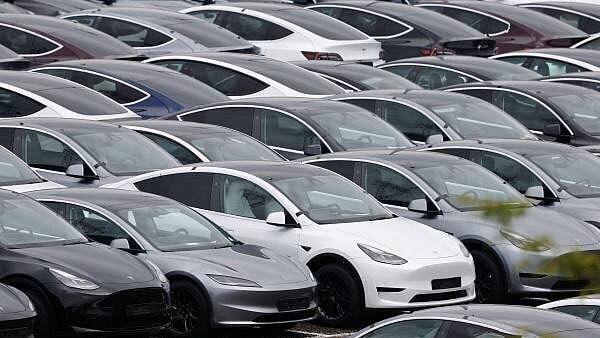
Representative image of electric vehicles.
Credit: Reuters Photo
There are three reasons why countries need to electrify their vehicle fleets. The most important is climate change. The transport sector consumes vast amounts of fossil fuels and contributes roughly 15% of the global annual carbon dioxide emissions. Zero-emission vehicles, or electric vehicles (EVs), replace oil with electricity, ideally generated from renewable energy sources, and are hence seen as a major part of the solution.
The second reason—critical for our cities—is that EVs help reduce local air pollution. The third is economic: reducing oil consumption saves valuable foreign exchange spent on imports. These are all compelling reasons for action. But they are not sufficient on their own. We need a reset: a comprehensive review of what we are doing and why—so that we can advance not just vehicle electrification but also secure the broader benefits it promises.
In 2019, NITI Aayog laid out an ambitious roadmap for India: by 2030, EVs would comprise 70% of new commercial cars, 30% of private cars, 40% of buses, and 80% of two- and three-wheelers. As of mid-2025, India is still far from meeting these targets. The only segment showing significant progress is three-wheelers, with about 60% of new registrations being electric. In contrast, EV penetration among new cars, two-wheelers, and buses remains at a modest 5-6%—too small to meaningfully impact pollution, decarbonisation, or oil imports.
Vehicles are among the biggest contributors to the toxic air we breathe. The problem lies not only in the emissions from various categories of vehicles but also in their sheer numbers. Hence, the dual strategy to combat air pollution must include transitioning to cleaner vehicles and reducing the number of vehicles on the roads.
When Delhi shifted to compressed natural gas (CNG) in the early 2000s, the focus was on replacing grossly polluting buses, taxis, and autorickshaws. These public and commercial vehicles account for the highest mileage in any city, especially Delhi. The science is clear: the longer the travel, the greater the emissions. Importantly, the public subsidy for CNG conversion was also an investment in upgrading public transport—creating space for people, not just vehicles.
But Delhi's post-CNG experience is a cautionary tale. In the two decades since, the city has failed to sufficiently expand and modernise its public transport system. As a result, vehicle numbers have continued to surge. Delhi adds about 1,800 new vehicles daily—of which roughly about 500 are private cars. Nationwide, over 10,000 private vehicles are added to Indian roads each day. This implosion of vehicles on the roads, despite new flyovers and road networks, has led to chronic traffic congestion. In Delhi, average speeds drop by 41% during morning peak hours and by 56% in the evening. This clearly establishes the correlation between hours spent in traffic and rising air pollution.
India’s decarbonisation and air pollution objectives can only be achieved if we put in place a revolutionary idea, and that is to reduce private transport modes on our roads and transition to an approach that moves people, not vehicles. This means, in the case of India, private EVs will only work if there is a mandate—a compulsory large-scale and time-bound switch to zero-emission vehicles and out of the IC engines. Simply adding more cars, even if electric, will not work to contain air pollution or the climate objectives.
The good news is that the Indian government’s policy is not mesmerised blindly by electric cars. It has chosen to subsidise EVs used for mass transport, such as buses, or paratransit like three-wheelers. Even where subsidies apply to private vehicles, they are directed towards two-wheelers, which are efficient users of road space. This is the real game changer. Every grossly polluting segment in vehicles—from three-wheelers to taxis to buses—must be required, through a time-bound mandate, to switch to electric. The mandate should apply not only to new registration but also replace older, more polluting vehicles. Secondly, there must be restraints on private vehicle usage through measures, such as parking charges, alongside incentives for public transport. Only when private cars are replaced by truly low-carbon options—walking, cycling, buses, trams, and metros—can India achieve its objectives. Our electrification agenda should be the mobility transformation agenda, nothing less.
(The writer is a former professor at The Royal Society, Belgium)